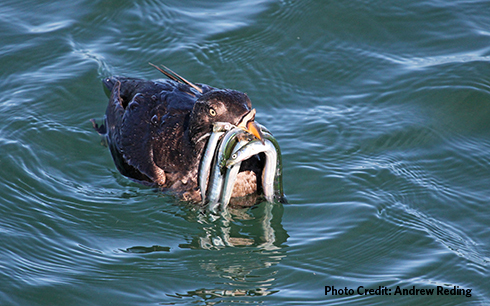When you buy a house, do you inspect only the roof? Of course not. You look at the whole structure: the foundation, insulation, plumbing, and many other aspects that indicate the overall condition of a home.
Taking a look at the big picture is wise when buying a house -- and equally wise when making many other decisions, including how we conserve our oceans. And it could translate into a huge benefit for fish as well as those who enjoy or depend on them.
Before setting fishing rules, fishery managers consider the health and abundance of a particular fish population, typically one population at a time. Instead, they should take into account not only individual fish populations but also the ecosystems in which they live -- the whole house, in other words.
In practice, this would mean that before managers set fishing rules, they would consider where fish live, how their environment affects them, what they eat, what eats them, what unique roles they perform in the oceans, what threats they face from a changing ocean ecosystem, and how fishing affects that environment.
Such an approach, ecosystem-based fisheries management, may sound complex, but there are concrete, cost-effective steps to make it a reality, including conserving habitat where fish spawn and protecting food sources for fish. This holistic approach could help dwindling species recover and boost healthy populations -- achievements that can bring economic benefits to fishing businesses and coastal economies.
Some of the fisheries management councils are adopting this approach. In Alaska, home to some of our nation's most prized commercial fisheries, the North Pacific Fishery Management Council tracks trends in the environment to help guide decisions about catch limits. The council also has protected several kinds of prey, or forage fish, the smaller species that provide food for the larger. And it has permanently closed about 1.2 million square miles of ocean bottom to fish trawling and scallop dredging -- both of which drag destructive gear along the ocean floor -- to help protect habitats that are important to bottom-dwelling species. These and other conservation-minded tactics have helped create some of the most robust and healthy fish populations in U.S. waters.
Farther south, the Pacific Fishery Management Council, which regulates fishing in federal waters along the entire western U.S. coast, recently adopted its first ecosystem plan -- a document that spells out how to look at the big picture when managing marine resources.
While some fishery managers already consider the whole rather than just the parts, we need to ensure that all of them do so by making it a requirement in federal law. Now is an opportune time as Congress considers renewing the nation's primary fish law, the Magnuson-Stevens Fishery Conservation and Management Act. Legislators should require policies that protect and restore ocean ecosystems and also specify how ecosystem information can be factored into fisheries management rules and plans.
The law was created nearly 40 years ago, when scientists mostly relied on reported catch from fishermen to draw conclusions about the health and abundance of fish populations. With modern, sophisticated technology, we now know significantly more about fish migration patterns, species health, what affects them, and the roles they play in the ocean.
Seafood enthusiasts, fishing businesses, coastal communities, and anglers will benefit if we can ensure that fishery managers use all the information they have to make smart decisions. We need to remind them of the wisdom of looking at the whole house -- not just the roof.

